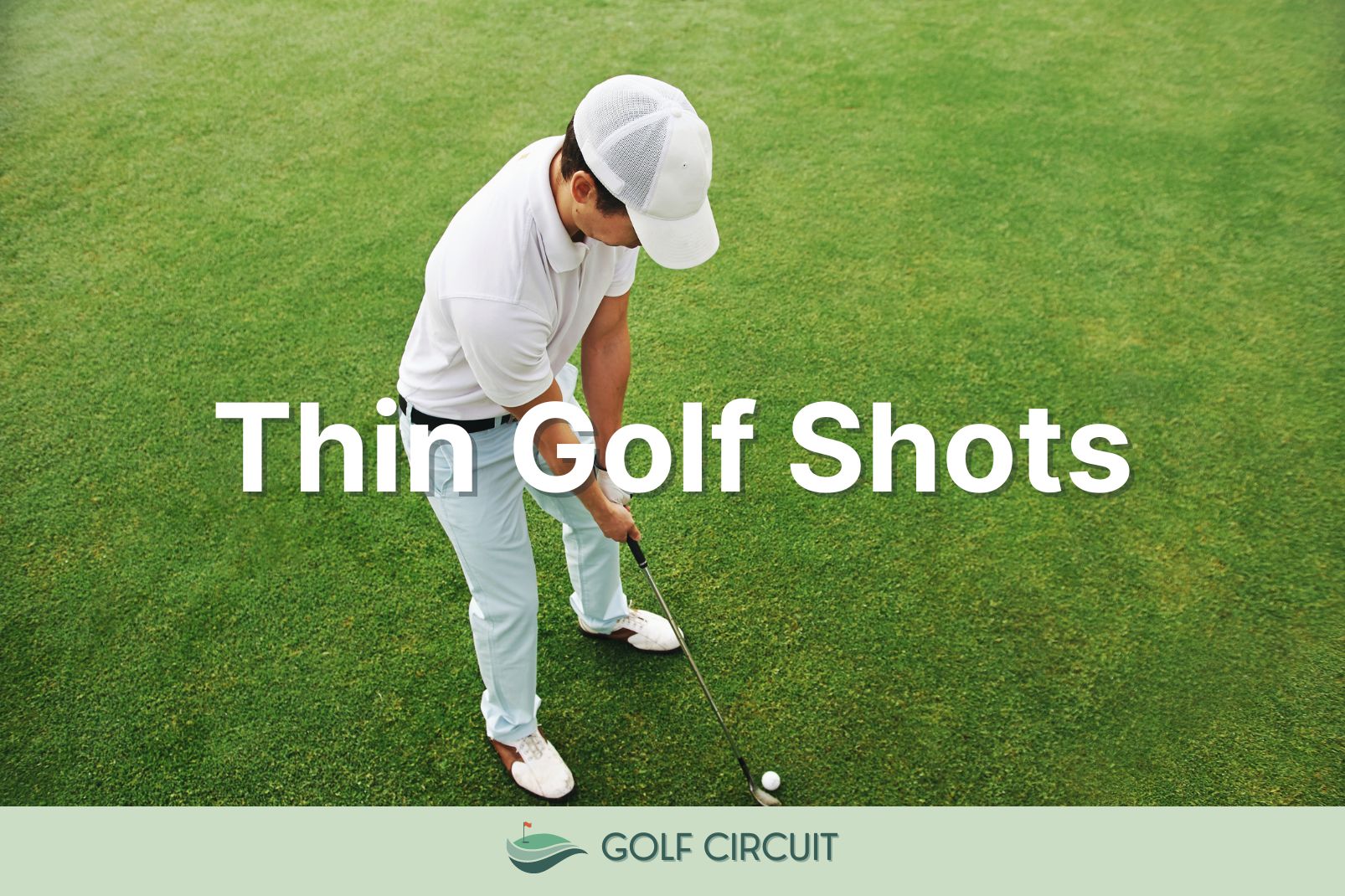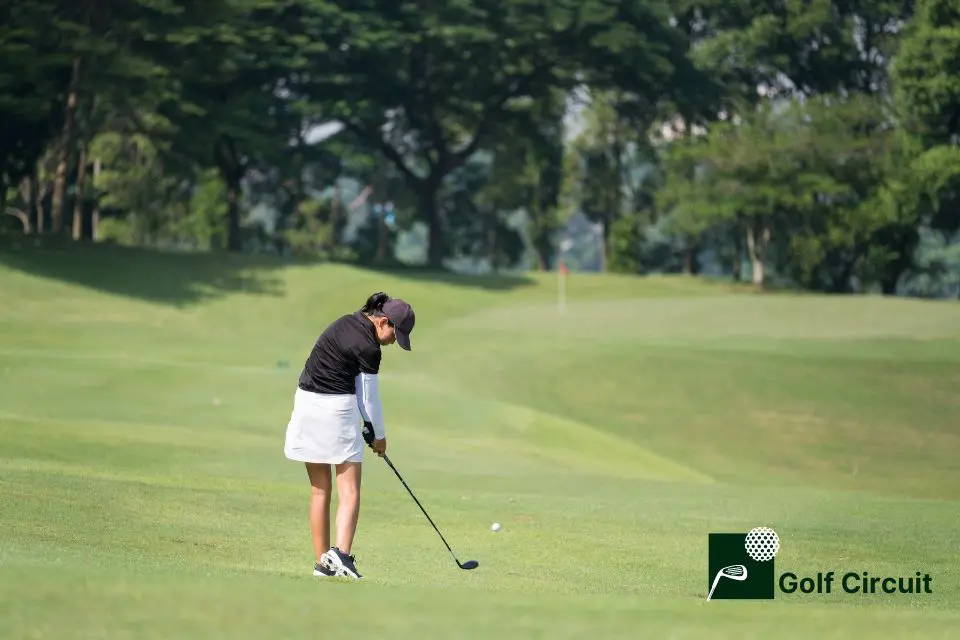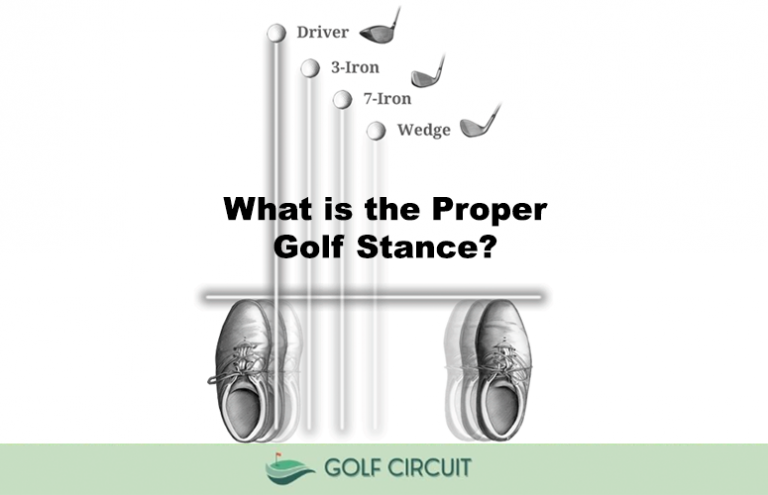Hitting Golf Ball Thin: What Is It and How To Stop? (6 Steps)

Some great players will say they will “hit it thin to win.” This tells us that the thin miss is certainly not the worst shot in the game, but it can get you into some trouble.
Intentionally hitting a shot a bit thin may not cause too many issues for you, but when you start doing this without trying, it’s best to know how to fix the problem.
Here are some of the steps you can take to stop thinning your golf shots.
What Is A Thin Golf Shot?
A thin golf shot is one where the ball is hit toward the middle of the golf ball or higher. A thin golf shot may like a jolt in your golf club, due to hitting the ball with the bottom of the club.
Steps To Stop Thinning Your Golf Shots

When you thin golf shots, the most important part of the process is to determine what is causing it. As we mentioned, thin shots can help you sometimes, but ultimately having control as to what is causing this is of utmost importance.
Step 1: Learn What Impact Looks Like
After teaching golf for many years, I realized that amateur golfers have a significant misconception about how to get a golf ball up off the ground.
Professionals and those who know the game well understand that hitting down and through a golf shot is the way to get a ball to go up in the air. However, many players still feel like they need to help the ball up in the air.
When you make a solid impact with the golf ball, expect the club to be traveling down and through the grass; the divot is after the golf ball. Having this picture in your head before you swing can help improve impact and eliminate thinning your golf shots.
Step 2: Watch The Spine Angle
Another issue that golfers struggle with is their spine angle at impact. Many times players stand up instead of maintaining their spine angle through hitting the golf ball.
As soon as you lose this spine angle, even just by a small amount, the results will be that the bottom of the club hits the middle of the ball.
This causes a thin golf shot with a very low spin that will cause a ball to roll forward with almost no backspin on the ball. Practice with a mirror to learn what your spine angle should look like and ensure that it is not changing as you enter the impact position.
Step 3: Turn Instead of Slide

Every time I have gotten into the habit of thinning golf shots, it has had to do with sliding instead of turning. The sliding happens when instead of making a good turn back with your hip, the hip moves more laterally.
When this happens, the angle of the clubface is off, and your head can even move off the golf ball. Turning, as opposed to sliding, helps to get the club back to impact position the same way it was at setup.
Work on your takeaway and have your lower body make an efficient pivot as soon as you take the club back. (Focusing on your right arm in golf swing may help with this)
Step 4: Keep Head Stable
If you watch the best players in the game, there is very little head movement. These golfers can stay more stable and hit cleaner and crisper shots because their head is stable, and they are not dropping it up or down or side to side.
One of the main issues that golfers have with thinning shots is a reverse pivot that causes the head to move towards the left on the backswing and then drop back down on the downswing.
This causes players to hit up on the golf ball, and again we see the bottom of the iron hitting halfway up the center of the golf ball.
Step 5: Pay Attention To Tempo
When your tempo is off, you can easily hit both thin and fat shots. However, in the majority of the competitive golf, I have played, one of the main issues I struggled with was the tempo getting a little quick.
The chances of me giving the golf club enough time down on the ground are slim when it gets quick.
The bottom line here is that you can’t and shouldn’t rush a great golf swing. Instead, let the club take the time to penetrate into the ground and take that nice thick divot after the ball. Keep your golf swing tempo more methodical and controlled, and it’s easier to hit more solid shots.
Step 6: Check Stance Width and Ball Position
A perfect setup will help you hit any golf shot better, but when hitting it thin, chances are your stance may be too narrow. Sometimes a narrow stance does not give you enough balance in your golf swing and can cause you to hit the ball a bit thin.
Always make sure your feet are shoulder-width apart, and you can hit down and through the golf ball with every swing.
In addition, remember that we need to trap the golf ball on the downswing when hitting an iron. Therefore if the ball is too far up in the golf stance, the chance of hitting it thin increases considerably.
Most of the time, the best ball position will be in the center of your golf stance. If you struggle with proper ball position, a one length set of irons could be a good fit for your game.
Frequently Asked Questions
Here are a few of the most commonly asked questions about thinning golf shots.
How do I stop hitting my golf shots thin?
The main reason for hitting a golf ball thing is poor setup and improper spine angle at impact. If you can ensure your setup is perfect, simply adjust your spine angle to be more consistent and do not allow it to dip up and down.
Why do I chunk and thin my irons?
Chunking and thinning irons come from inconsistencies in the swing plane and set up, and stance. If you want to stop chunking and thinning your golf irons, be more intentional about how you approach each golf shot.
Why am I blading my chip shots?
Most golfers will blade their chip shots when they get a bit handsy. Use your larger muscles like shoulders and even the lower body to keep the club grounded.
Conclusion
Hopefully, you now have a better idea as to why you are thinning your golf shots and how you will be able to fix this moving forward. Thinning typically turns out to be a better miss than a fat or chunked shot, but it’s still something that is best to avoid.
Spend some time working on your turn and head stability, and make sure you fully understand what the impact position looks like. These key tips will ensure you hit fewer thinned golf shots.






